Category: Philosophy
May 6, 2012

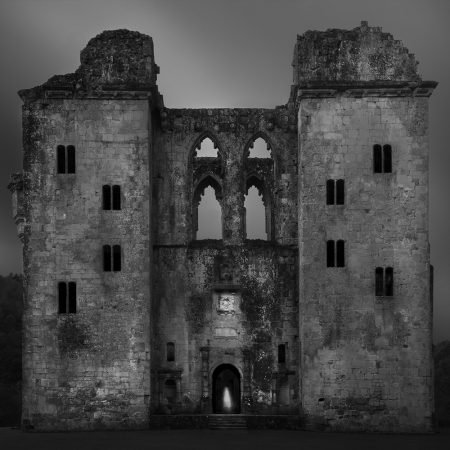
A couple of years ago my family and I were vacationing in a small village on the coast of England and the only preparations I had made to photograph there was to bring along a white bed sheet.
The Story of the White Bed Sheet
I had recently photographed ghosts at Auschwitz-Birkenau and wondered if I could carry this theme over to other historical sites. The trip to England seemed perfect with all its history and castles so readily available. But this time I thought, instead of relying on the unsuspecting tourists to play the role of ghost, I would control my subjects a bit more by using my daughter Mason. And so we brought a white bed sheet to transform her into a ghost.
We photographed at many sites and sometimes the ghost was the prime focus of the image while other times it was only a small element of the image, as in “Old Wardour Castle” above.
We experimented with different “ghosting” techniques and settled on the “30-second spin.” Mason would stand in one spot and spin for 30 seconds. Initially it was hard because she would get dizzy and start to drift, but she soon mastered it and became and excellent ghost.
Generally the castles were pretty deserted and only occasionally did we run into other tourists. Imagine this scene: your walking around an ancient castle when you come across someone in a white sheet spinning around! The parents were generally too reserved to act interested or to ask what we were doing, but their children would watch and giggle.
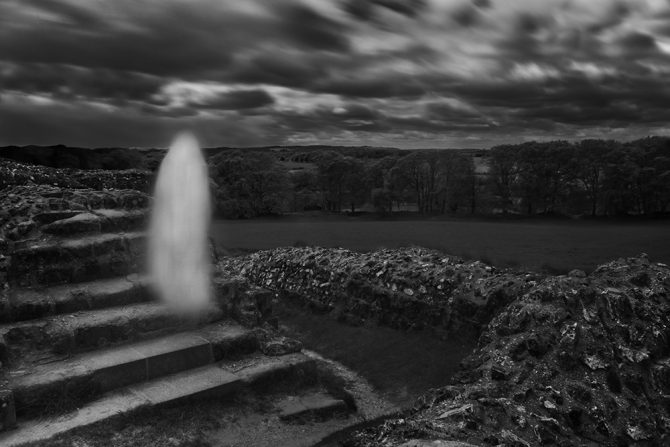
I didn’t really care for this series much and learned an important lesson from the experience. The ghost idea worked at Auschwitz-Birkenau because I felt inspired to do it and because it had purpose there, but at the castle it seemed merely a cheap gimmick. I was trying to capitalize on a “technique” and a past success rather than find new inspiration.
But alas it was not a wasted effort! I did get this one image that I really like, my daughter and I have a great memory and I learned an important lesson; don’t copy others, even if it’s yourself!
Cole
P.S. This article was published in my newsletter on 5/6/2012. Are you getting my newsletter? If not, you may sign up here.
April 27, 2012
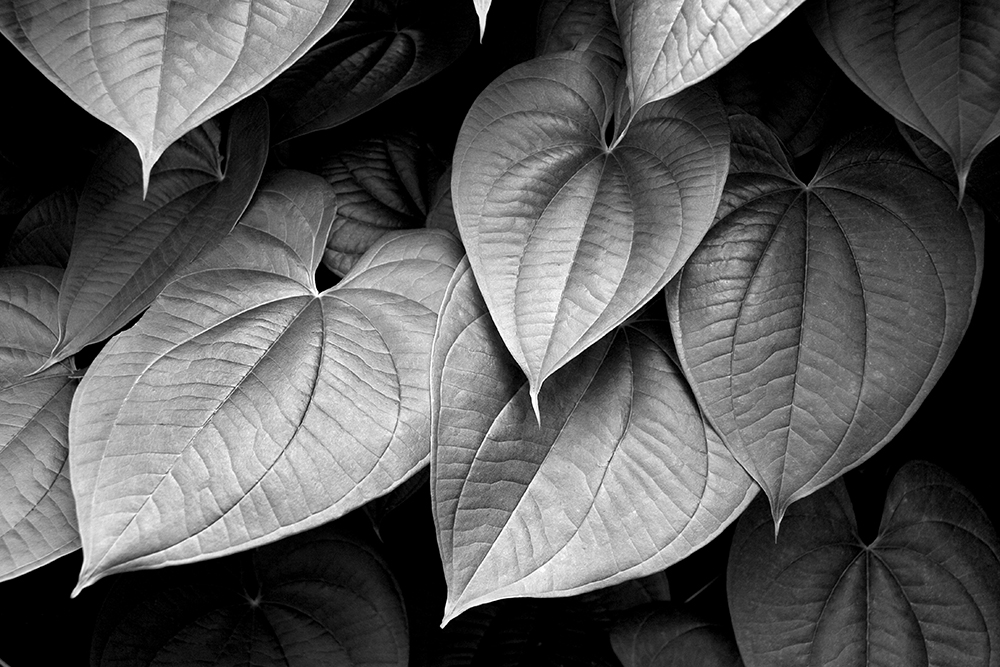

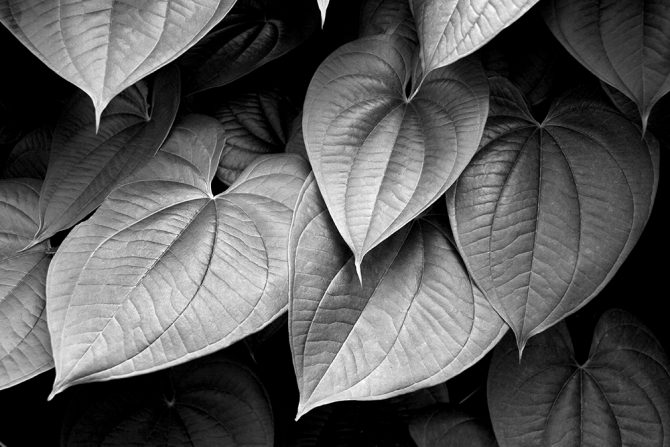
A friend and I were recently talking about how to set the price for our images and this brought up some thoughts I’ve had over the years. Typically people price their work in one of three ways:
1. Cost method, total up your costs and then add a percentage for profit.
2. What others are charging for “similar” work. If others are getting $150 for an 8 X 10 then I should be able to get that too.
3. What the market will bear.” Price your work as high as it will sell for and get as much as you can.
First let me say that if you’re trying to earn your living from your photography, then ignore everything I’m about to say. I made a purposeful decision not to earn a living from my art because I didn’t want to lose my passion for it if I “had” to do it every day. Looking back these many years, I do not regret that decision and in fact it’s been reinforced by another lesson that I’ve learned; art and money do not mix well because it requires too many compromises. Worrying about producing art that others like and will buy is not conducive to risk taking and being creative. When I create I want to think about only two things; the art and how I feel about it.
So what method should you use to price your work? I’m suggesting that there might be another way to determine pricing based on your goals rather than your costs or market forces. Several years ago I asked a similar pricing question to someone I respect and he in turn asked me a question: in the end would you rather have your images in thousands of homes or to have sold them for thousands of dollars? He emphasized that there was no right or wrong answer, only what I preferred. I immediately answered that I would like my art to be in thousands of homes.
Therefore I have chosen to price my work reasonably and affordably compared to my peers, because my goal is to produce art that I love and allow as many people to purchase it as possible. This approach fits my goals; I do what I love, have remained independent and I am able to pay for my equipment, supplies and photo trips. I am the luckiest person in the world!
However this approach has come under criticism from my peers for two reasons. First, I only offer open editions and many feel that this cheapens my work and makes it less “serious.” But the truth is that offering limited editions is simply a pricing strategy, it creates a shortage to increase the price. This approach goes against everything I believe, and the thought of someday not being able to make any more prints is completely unacceptable. My intent is that my art be enjoyed by many; not 12, 25 or 50 people!
The second complaint other photographers have with my pricing is that my lower prices hurts them. If my friend is asking $1500 for his image and I’m asking $400, then he believes that my lower pricing makes it harder for him to sell his higher priced work. However I do not believe this to be true, because we are not buying a commodity such as apples. If I’m selling apples for $400 a ton then it does make it harder for someone else to sell the same apples for $1500 a ton. But in the art world we are not talking about apples and apples, but rather apples and oranges. If someone really loves my friends oranges, they are not going to buy my apples just because they’re cheaper.
Likewise someone will not buy my art just because it’s cheaper. People buy art because they love it!
What I believe about editions and pricing go against everything that the traditional art world and gallery system believe. I don’t care. I create for myself and count myself lucky to find others who appreciate and want to purchase my art. My goal is to put that art into as many homes a possible. This is what makes me happy.
Cole
P.S. Joel Tjintjelaar just published the first interview in a new “Artist’s Vision Series” in which he focuses on the vision behind an image. My image “The Angel Gabriel” is featured in this first interview.
See the Article in Google Docs
April 13, 2012
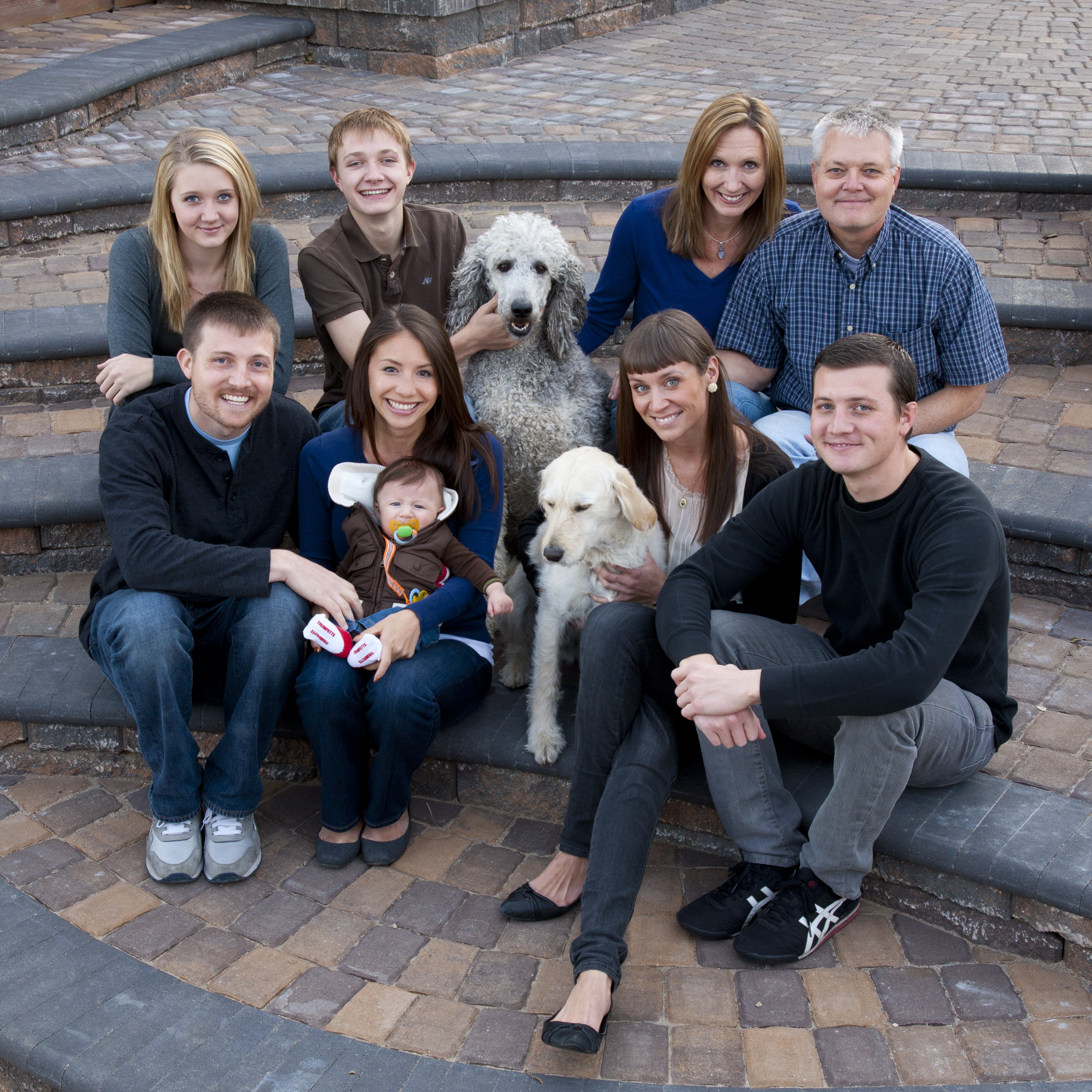


I’ve done a number of interviews recently and there is this thought that keeps coming back to me again and again and it has to do with the role photography plays in my life. It is often assumed that I earn a living through my art; I do not, I have a full time job in Education. It is also assumed that my life revolves around my photography; it does not, my life revolves around my family. Photography is a major pursuit in my life, but it is not my life, it is what makes my life better.
I love photography because it brings balance to my life. I live in a business world full of numbers, logic and rational decisions. Photography is the opposite of that, it is creative, irrational and subjective. For many years I had set aside photography as I struggled to earn a living, raise a family and build a career. This produced a life out of balance. When I returned to photography it added a little yin to my yang and helped bring it back into balance.
Having opposites in life is good, those contrasts help us to value what we have. When I go on a 10 day photography trip by myself, it helps me appreciate my family back home. When I must justify decisions at work with facts and logic, it’s then nice to produce a piece of art that just “feels right.”
Opposites in life are not always appreciated in the moment, but they do play an important role in our lives. The storm helps appreciate the sun when it appears, sickness helps us enjoy health, loss helps us value our loved ones and my day job helps me appreciate my photography.
I really love photography and creating images, but not more than my family or my friendships. Photography is not my life, but it makes my life better.
Cole
P.S. Here are links to some of my recent interviews:
January 13, 2012
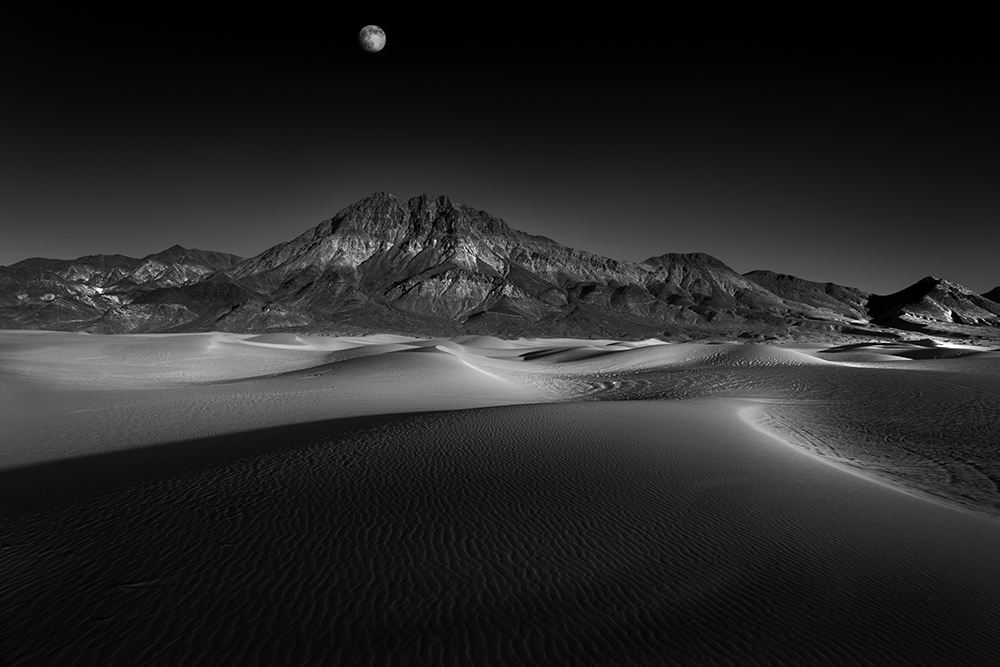
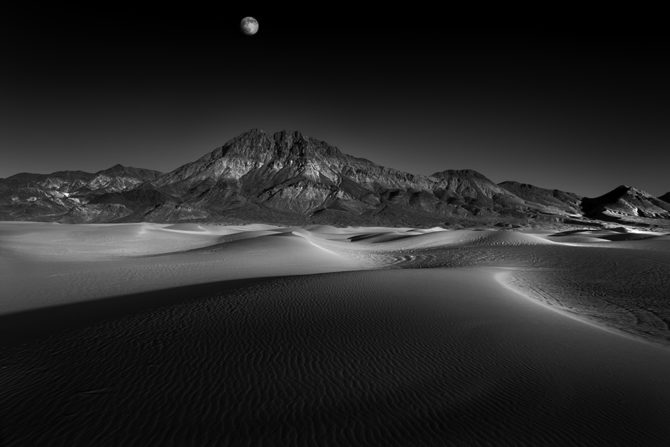
Today is Friday, tomorrow morning I’ll be in the car and driving to Death Valley. I go there every year about this time, alone, to create. I really enjoy this trip for both the location and the solitude. It’s where I recharge my creative batteries by blocking out the rest of the world and focusing on just one thing: seeing.
I’m just going to write my random thoughts as I embark on this trip, and as I’ve been writing three articles for the last two weeks, my mind is a muddle of thoughts. All semi-gelled and semi-fluid at the same time.
Location, does it matter? Theoretically it shouldn’t, I should be able to find a great shot in my bathroom. But the reality is that going somewhere new does seem to help us see anew and fresh. I don’t need a fantastic location like Yosemite which wears all it’s beauty close to the surface, just somewhere where my eyes can see it freshly.
Shooting alone or with others? I never can photograph with others present, I must be alone. When I have others with me I am constantly focused on if I’m inconveniencing them by staying out too long. Plus if there was someone with me I’d have to talk. I don’t want to talk on these trips, I just want to see and think.
Expectations. Sometimes when I go on these trips I have expectations that I must bring something great back or I’ll disappoint others. I need to lose any sense of obligation to others and only seek to please myself. If I come home and I didn’t find anything, then that’s okay. You cannot force creativity, in fact I think that this actually retards the process. Let it be. In truth if I come home with just one decent image, I’ll be as happy as a bird with a french fry!
Photographing where billions have photographed before. Yes, going to a widely photographed location such as Death Valley has its drawbacks, everything has been photographed a BILLION times. That is why I avoid the typically photographed spots or at least if I do go there, I try to photograph them differently. Remember that anyone can stand where Ansel Adams stood, frame the shot the same way and produce a nice shot. But in the end it will only be an weak imitation and is that really what you want to do, imitate others? The key is photographing with your vision, that’s what will make the images uniquely yours.
Isolation. I’ll be isolated for two weeks and I’ll love it. After these trips I always become more appreciative of people, a little friendlier and more centered. City life is grueling and not so good for the soul.
Mexican food. I’ll be stopping at every little hole-in-the-wall Mexican restaurant, looking for that local hidden secret. Mexican food is the best!
What’s important in life? I was recently asked in an interview to describe my perfect day, here is what I said:
With my many years of experience, I’d answer this question much differently than I would have when I was younger! Strangely enough the perfect day may not involve photography at all. Despite how much I love photography, I do not love it more than my family or my life. Photography is not my life, but it is one of those special things that help me to enjoy life.
A perfect day would be spent with my family and new grandson. We would spend the morning walking around the cove, and then we would dive the La Jolla ecological reserve and finish up by picnicking on the grass overlooking the Cove. I’d then slip away and go do some long exposure work while relishing the feel of the warm sun on my face, listening to the sounds of the beach, enjoying the smells and just being grateful that I could enjoy it all. And oh yes, we’d have Mexican for dinner!
Death Valley is such a wonderful place and especially so in the winter; it’s isolated, uncrowded and seeming barren. I say “seemingly” because if you stop, sit and look you will see the truth. It just takes some patience and time to see. But that’s also true life, slowing down and taking the time to look will reveal much.
Goodbye. I hope I’ll be back in a few weeks.
Cole
December 3, 2011
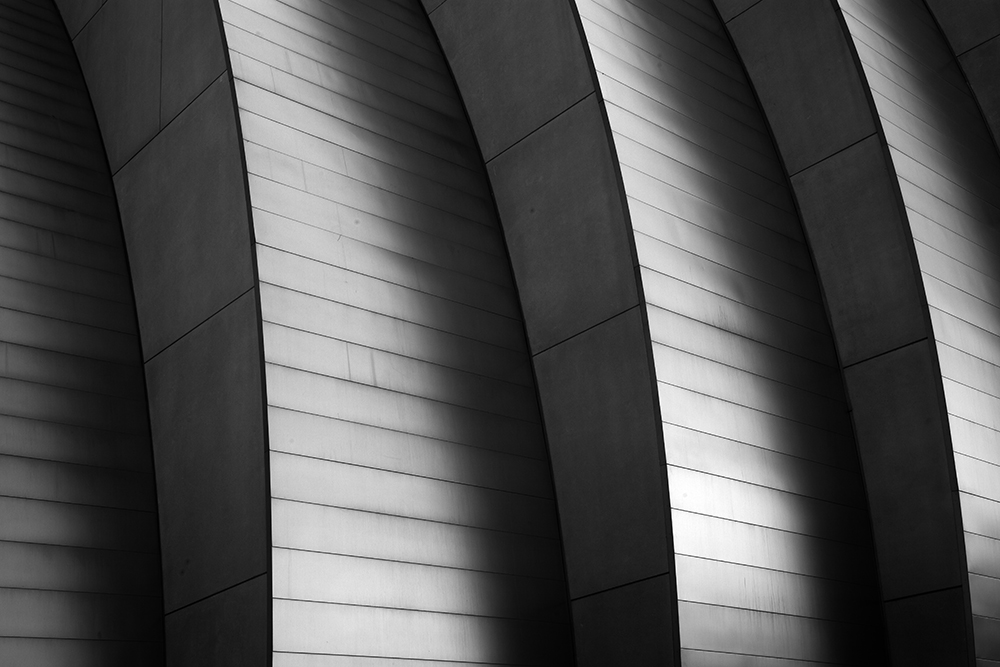
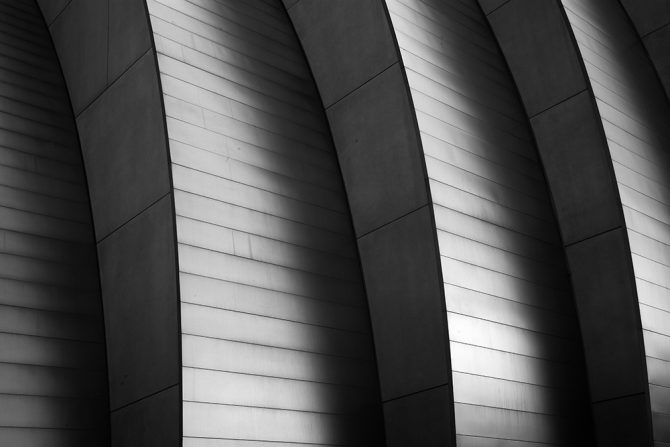
Receiving another rejection notice can be discouraging at best, and at worst can cause you to lose faith in your abilities and cause creative paralysis.
I have submitted my work to hundreds of shows, exhibitions and magazines; and while I have gotten in some, I have also received many rejections. What is one to make of a rejection? Does it mean your work is not good enough or are there other reasons why it might have been rejected?
To put a rejection into perspective I first ask myself “why did I submit to this event?” Understanding your motives can be useful in understanding your reactions. For example there was a time when I submitted my work to receive validation, to have someone say “your work is good.” And of course when my work was not accepted I interpreted this to mean that my work was not good and perhaps I was not a good photographer.
But over time I have come to understand that my opinion of my work should be based on what I think of it and not what others think, and certainly not if it gets accepted into exhibitions! One of my favorite quotes is: “What others think of you is none of your business” and likewise what others think of my art is none of my business; my opinion is the only one that matters. That is not to say that I do not enjoy exhibiting or receiving compliments about my art, but there is a difference between enjoying compliments and needing them to feel good about oneself and ones art.
So back to the rejection letter and what it might mean. The first possibility that I had to face was that my work was not good enough. It is very difficult to objectively evaluate your own work and even harder still to admit that it may not be good enough, but we must do that if we are going to improve. Rejection can be a good thing if it leads to change and improvement.
But from my experience, a rejection can often mean something else much more innocent. Juror’s like anyone else have their own tastes, likes and dislikes. They tend to choose images that they personally like and that’s not a statement about your work. To increase the odds of my work being accepted I would research the juror’s own work and exhibitions they had juried to see what type of images they liked. If my images were in stark contrast to their preferences, I would skip that submission.
For example I used to regularly submit to Shots Magazine even though their selections were “younger” and more “hip” than my work. I never got in and that bothered me so much that I irrationally set a goal of submitting until I got in, which I never did. It took a while before I realized that this was simply not the right venue for my work and it was not a reflection on the quality of my work. It simply wasn’t a good fit.
Another selection factor is how your image fits in with the other images in the exhibition. A juror doesn’t just choose the “best” images but actually creates a new body of work by combining the individual images into a purposeful and intentional grouping. Sometimes images are chosen because they tie in with other of the juror’s selections, which is again not a reflection on the quality of your work.
And then there is the “different” factor. I’ve had jurors tell me that they see so many images that they end up looking for ones that are simply different. If “different” is not your style and you’re more of a traditional photographer, your work may not be selected by that juror.
There are so many reasons why an image may not be selected and so many of them have nothing at all to do with the quality of your work. That is why it’s so important that you believe in your work and continue to improve and persevere. Everyone has rejections and the people who win in the end, are the ones who do not give up.
Strategies for Improving the Odds:
Over time I devised a strategy that allowed me to improve my odds of getting my work selected, here is what I did:
1. You must have good work, and “good” is more about the composition and feeling your image evokes rather than its technical quality. From my experience a juror will almost always pick an emotional image with poor technical quality over a technically perfect image that has no feeling or soul.
2. Research the juror and their personal tastes. Does your work fit in? Can you select images for submission that seems to be more in keeping with their preferences? Are there jurors that have similar tastes as you, if so submit to shows that they are jurying.
3. Focus on the smaller exhibitions that are likely to have fewer submissions and less on the really big exhibitions. I’d rather submit five images to a show with 500 submissions than submit five to a show with 5,000. Also look for shows that extend their deadlines, that often means they have received fewer entries than they expected. Let the numbers work in your favor.
4. Submit as many images as you can afford. Submitting five images versus one dramatically increases your odds. Look for shows that are offering discounts, this will allow you to enter more images and improve your odds even more.
5. Submit a variety of styles. I often would see someone submit five images and they were all virtually identical in subject and style. I would submit five very different images, figuring that if the juror didn’t like one then another might appeal to them. This is one of the best strategies I pursued to increase my odds.
6. Select images that you love and have a passion for. In the beginning I would survey friends and family to try to pick images that had the widest appeal. That approach never improved my odds and it left me feeling conflicted and uncertain. You should pick images that you’re passionate about and forget what others think. I do not know how it works, but your passion does make a difference and improves your chances of getting accepted.
By using these techniques I was able to achieve a 50% success rate; meaning that for every two submissions I’d get into one. Some of that was accomplished by improving my art and some of it by using these techniques. Use both to improve your odds.
Rejection is a part of the artist’s life and while you can never remove it, you can reduce it. And more importantly you can better deal with rejection when you believe in your art and understand that the rejection was just another person’s opinion.
In the end, you must be pleased with your work regardless of what others think.
Cole
October 4, 2011
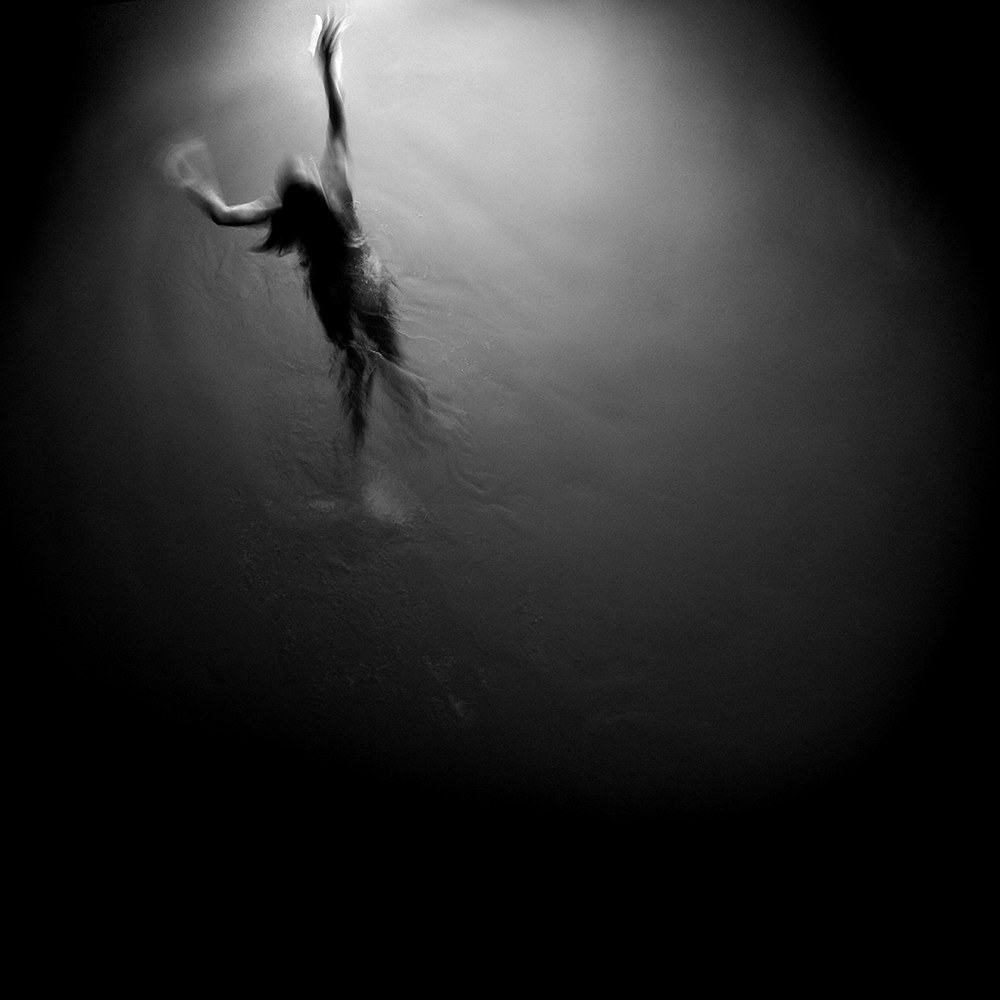
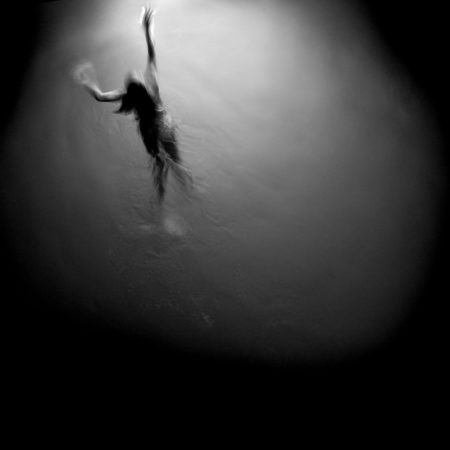
If you’ve read many of my blog entries, you know that I believe in keeping things simple. And I’m not just talking about the image, but my thinking, my workflow, my printing and everything else. It’s a philosophy that serves several purposes; first it allows me to stay focused on what really matters. Second, it minimizes distractions such as setting up and tinkering with hardware and software. Third, it makes things easier to diagnose and fix when they do go wrong. And fourth, it helps keep my mind clear of unnecessary clutter.
Many people feel that they cannot produce good images with just the basics, and I disagree. From my experience the basics can produce incredibly beautiful images that most people would envy. I would also suggest that the incremental improvement that these “extras” provide, is so small compared to the time/money spent that they are a poor investment. Your time would be far better spent on finding your vision than setting up programs and plug-ins, or to learn to see better rather than trying to learn to use special inks for your printer.
I’m not saying that there aren’t some “things” that will improve the quality of your work, but by far the largest improvement any of us could achieve would be to improve ourselves rather than our equipment. I tell people that if there is a place for some of these things, it’s after the basics have been mastered.
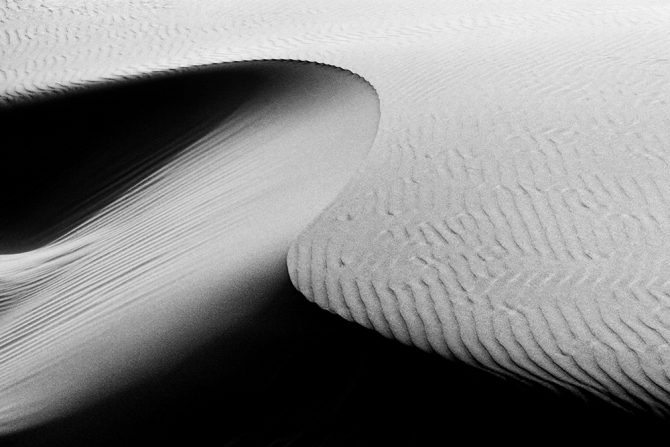
I have been a technophile most of my life and there were times when my equipment and processes were more important to me than the work I created. I always had the latest equipment and all of the newest gadgets. It was an expensive vanity and it kept me from doing what I really needed to do, and that was to find my own vision. And perhaps that’s part of the reason we do it, it’s easier to buy new equipment then it is to develop our creativity.
I feel passionately about the concept of simplicity and so I approached The Center for Fine Art Photography to see if I could teach this philosophy in a workshop. They agreed and so starting on Wednesday October 19th, I’ll be teaching a workshop entitled “Keeping it Simple.” They keep the enrollment small at the Center and so it will be an intimate workshop.
This seminar will be focusing ultimately on the image, but will also be covering vision, shooting, workflow, printing, framing, marketing and other topics. You can learn more about the workshop at the Center’s website: http://c4fap.org/workshops/2011Simple/
Cole
P.S. In the spirit of full disclosure; I have served on the board for The Center for Fine Art Photography, I am friends with the director Hamidah Glasgow and I donate my time to teach these workshops.
September 27, 2011
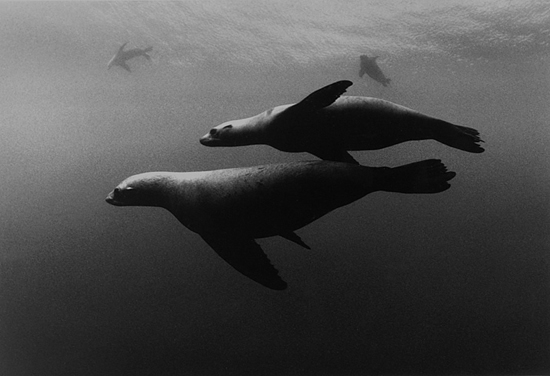

(Image: California Sea Lions #1 – Copyright 2011 by Chuck Davis)
My oft cited reason for “Photographic Celibacy“ is that I don’t want to copy the work of others, but there is in truth another reason; jealousy.
When I look at great work I become very jealous and wish that I had created something that wonderful. This happened to me today as I was putting my new and unopened copy of LensWork into the “give away” pile. I saw an image on the cover that stopped me dead in my tracks, an underwater image of sea nettles that caused a chill to go down my spine. I raced to devour the rest of the images and found they were created by Chuck Davis, an underwater photographer and cinematographer out of Pacific Grove, CA.
One of my loves in life is scuba diving and I’ve always longed to see great black and white, fine art, underwater images. Now at last I have and I am jealous.
Please check out Chuck’s website, he has such a variety of incredible images, and please drop him a line expressing how you feel about them. I think they are magnificent!
Cole
September 22, 2011
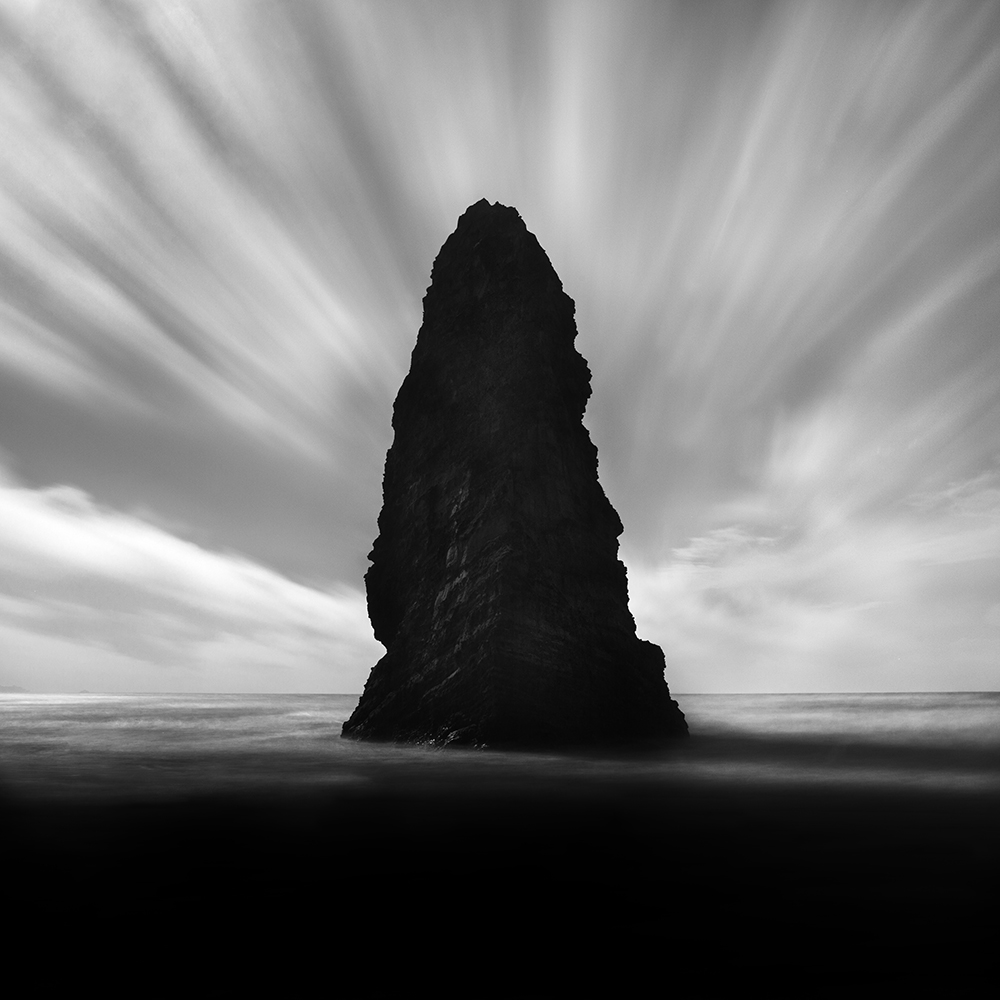

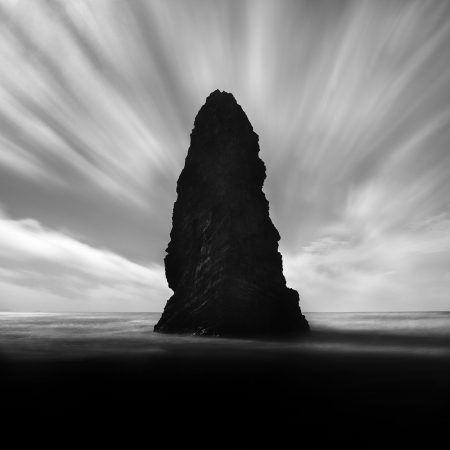
I’ve just returned from my annual Bandon trip where I take 10 days and think only about one thing: my art. Every year I worry if I’ll see something that inspires me and I get myself all worked up over it: Will I find something? What if I don’t? I’ve only 5 days left, now the pressure really is on!
It’s kind of like those nights when you just cannot get to sleep and you keep watching the clock, and with every hour the pressure increases because you have one less hour. It’s counter productive, we know, but we do it anyway.
So after days of walking and looking, something caught my eye. I was at a spot on the coast where the wind surfers congregate because of the fierce winds. Another affect of the winds are these magnificently crafted dunes that are compressed into a very small space between the surf and the cliffs. In that tight space wonderful shapes and shades of light are formed, different from what I normally see at traditional sand dunes.
It was there that inspiration struck; suddenly, unexpectedly and spontaneously. I saw something in those dune details that inspired me and I worked like crazy, everywhere I looked I saw something magnificent. I came back by a day later and I saw anew all over again. I ended up creating about 25 images for a new portfolio (title at present, unknown). The above image is one of my favorites from this new series.
Despite the pressure we put on ourselves, inspiration cannot be rushed. It just happens and when it does, you’ll know it by your excitement and how easy the images come together.
Cole
P.S. My next newsletter will be out in about two weeks and I’ll have this new series along with some other images from my Bandon trip.
July 11, 2011
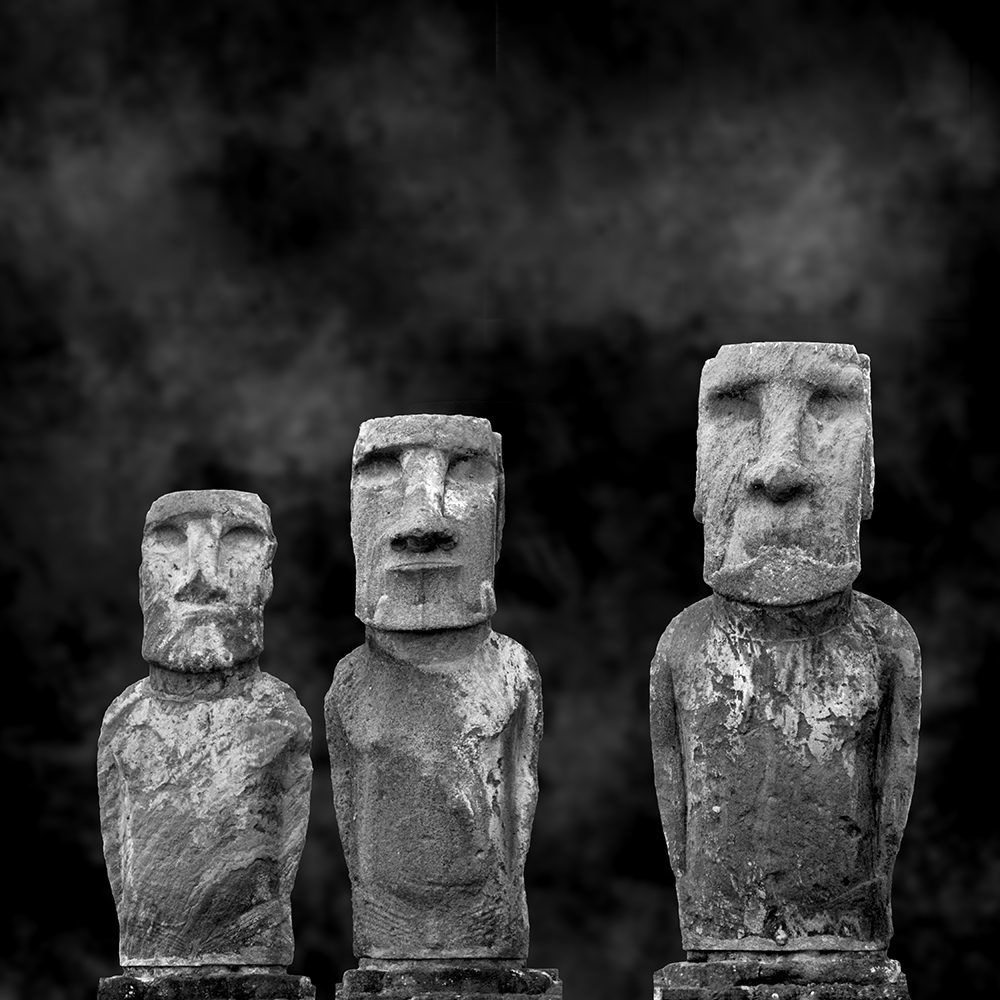

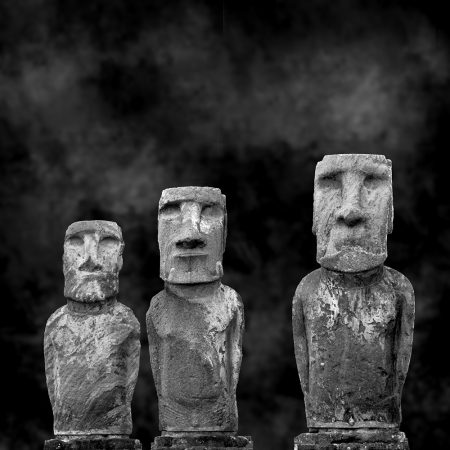
When I look at other photographer’s work I sometimes get discouraged. I’ll see an incredible shot, taken at a place I’ve visited before and wonder why I didn’t see it. I may see a great new technique and wonder why I didn’t have the vision to think of that. There will be a fantastic new portfolio on a familiar subject and I’ll wonder why I hadn’t see its potential.
In other words: I sometimes compare my work to others and become unhappy with my work and progress.
Do you ever feel that way? I suspect that we all do this sometimes: compare our work to someone else’s, or worse, compare our work to everyone else’s! It’s good for me to periodically remind myself of a few things (and that’s why I write all of these blogs);
First, creating art is not a competition, someone does not have to lose for someone else to win. Unlike much of life, we can all win if we create images that bring about personal satisfaction.
Second, it’s not realistic for a photographer to be great in all things. I am not going to be a great street photographer AND a great portrait photographer AND a great landscape photographer AND a great photojournalist AND a great abstract photographer. So comparing myself to all of these other photographers is just silly and frustrating! We can be great, but not in everything, and our goal should be to find what we are great in.
Third, please yourself. Comparing, in photography or in life, is never very productive. You cannot look to external standards, whether it be others work or their opinions, to find personal satisfaction. You must be comfortable with yourself and your art to find satisfaction.
Don’t compare your work or yourself to others, it’s not needed and no good will ever come from it.
Cole
May 26, 2011



I walk to lunch, I’m checking email.
I wait to cross a street and lookup the weather on my phone.
I stand in line to order, I’m answering someone on Facebook.
I wait for my food to arrive, I read an article.
I walk back to work, reading my iPad.
My head is always down.
Am I looking, am I seeing?
If I do not look, I do not see. If I do not see, I receive no inspiration.
Is my head down too much?
